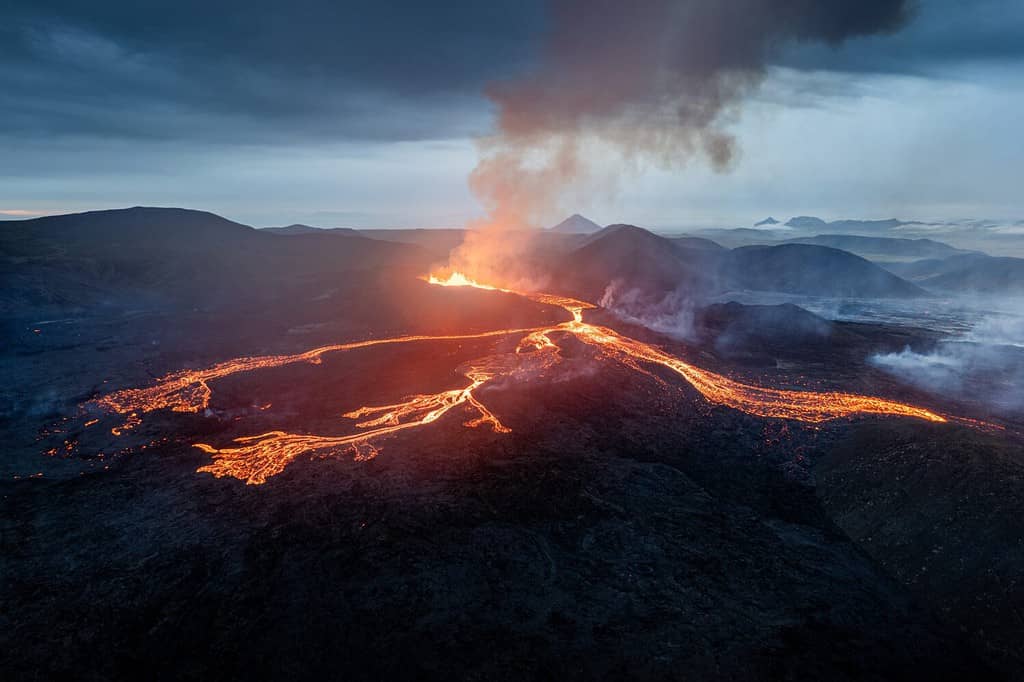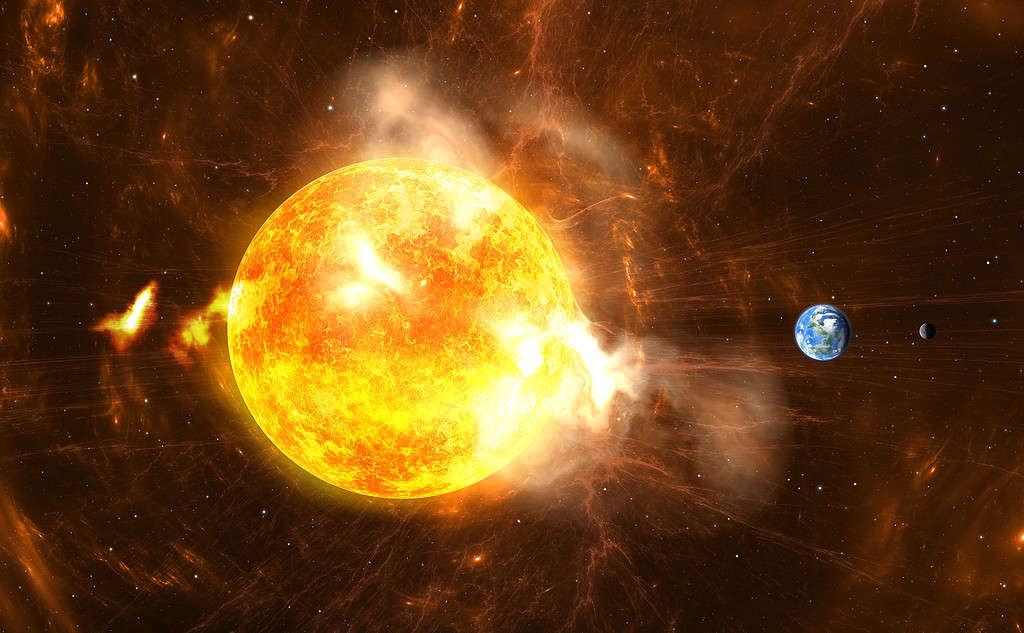Though plasma makes up 99.9% of the visible universe, it seems rare in our little corner. So, how hot is plasma in Fahrenheit, and how does it compare to the other states of matter?
What Is Plasma?

How hot is plasma in degrees Fahrenheit?
©sakkmesterke/iStock via Getty Images
So, what is plasma?
Plasma is the fourth state of matter. The other three are solid, liquid, and gas. These three states change as energy is added; the final stage is plasma. At a certain point, energy added to a gas strips electrons from molecules, which become positively charged ions. Plasma is created when enough electrons break free. This is why plasma, unlike gas, can conduct electricity and interact with magnetism.
How Hot Is Plasma in Fahrenheit?
The temperature around which matter begins to act like plasma is 6,000K, which is 10,340 degrees Fahrenheit. This is not a temperature at which it always happens. It is more of a range depending on the chemical composition of the gas, as well as its density.
Is Plasma Affected by Temperature?
Plasma is affected by temperature. The more heat added to a gas, the more energy is available to break electrons free of their atoms, allowing the gas to become plasma. When a plasma cools, the nucleus reclaims electrons from its environment to become a gas once again.
Is Plasma Hotter Than Fire?

Does fire burn hotter than plasma?
©Jenniveve84/iStock via Getty Images
Plasma, as it is formed naturally, begins to form at about 10,000 degrees Fahrenheit. Fires consuming pine trees burn at 660 degrees, while beech burns at 1,742. Candles typically burn at a maximum of about 2,600 degrees, which pales in comparison to plasma. Oxyhydrogen comes closest, burning at about 5,070 degrees.
Is Plasma Hotter Than Lava?

Which is hotter, lava or plasma?
©Wirestock Creators/Shutterstock.com
The intense heat from magma flows from volcanoes can ignite trees, houses, and asphalt. It has also been seen in news footage consuming houses and cars. However, lava “only” burns at 1,472 to 2,192 degrees Fahrenheit. High-temperature plasma is far hotter than lava.
Is Plasma Hotter Than the Sun?

Which is hotter, the sun or plasma? That’s a trick question!
©Pitris/ via Getty Images
The sun is actually a burning ball of plasma! The coolest portion of the sun is the surface, which burns cooler than the layers below and above it at about 10,000 degrees Fahrenheit. This layer is known as the photosphere and is the part that gives off visible light. The convection zone below it burns at about 4 million degrees Fahrenheit. The chromosphere above it ranges from about 7,000 to 11,000 degrees Fahrenheit.
What Is Low-Temperature Plasma?
Naturally occurring plasma requires temperatures over 10,000 degrees Fahrenheit to achieve the ionization level necessary to form. However, some artificial forms of plasma can be created at low temperatures. These low-temperature plasmas (LTPs) are used in various technological innovations, such as neon and fluorescent lights and plasma displays. The plasma in these devices is created when an electric current moves through a contained gas. This strips electrons from a small number of molecules, releasing them to interact with light-generating surfaces within the device. The limited number of excited electrons means that the rest of the gas is at an ambient temperature, meaning that the overall temperature seldom exceeds 1,200 degrees Fahrenheit.
How Does Plasma Compare to Other States of Matter?
Plasma is the fourth state of matter, after solid, liquid, and gas. In a solid, molecules are closely bound, giving the solid a fixed volume that keeps its shape. Liquids have more loosely bound molecules with a fixed volume, but the shape of a liquid assumes the shape of its container. A gas has weak connections among its molecules and takes the shape and volume imposed by its container. Some solids and liquids can conduct electricity efficiently, but gases are poor conductors. Once enough energy is applied to a gas, it becomes ionized. Electrons are ripped away from the molecules, forming an ionized gas. Once enough molecules are ionized, the matter reaches a plasma state. Matter in plasma form conducts electricity and magnetism exceptionally well, thanks to the mass of loose electrons.
The photo featured at the top of this post is © remotevfx/ via Getty Images
Thank you for reading! Have some feedback for us? Contact the AZ Animals editorial team.







